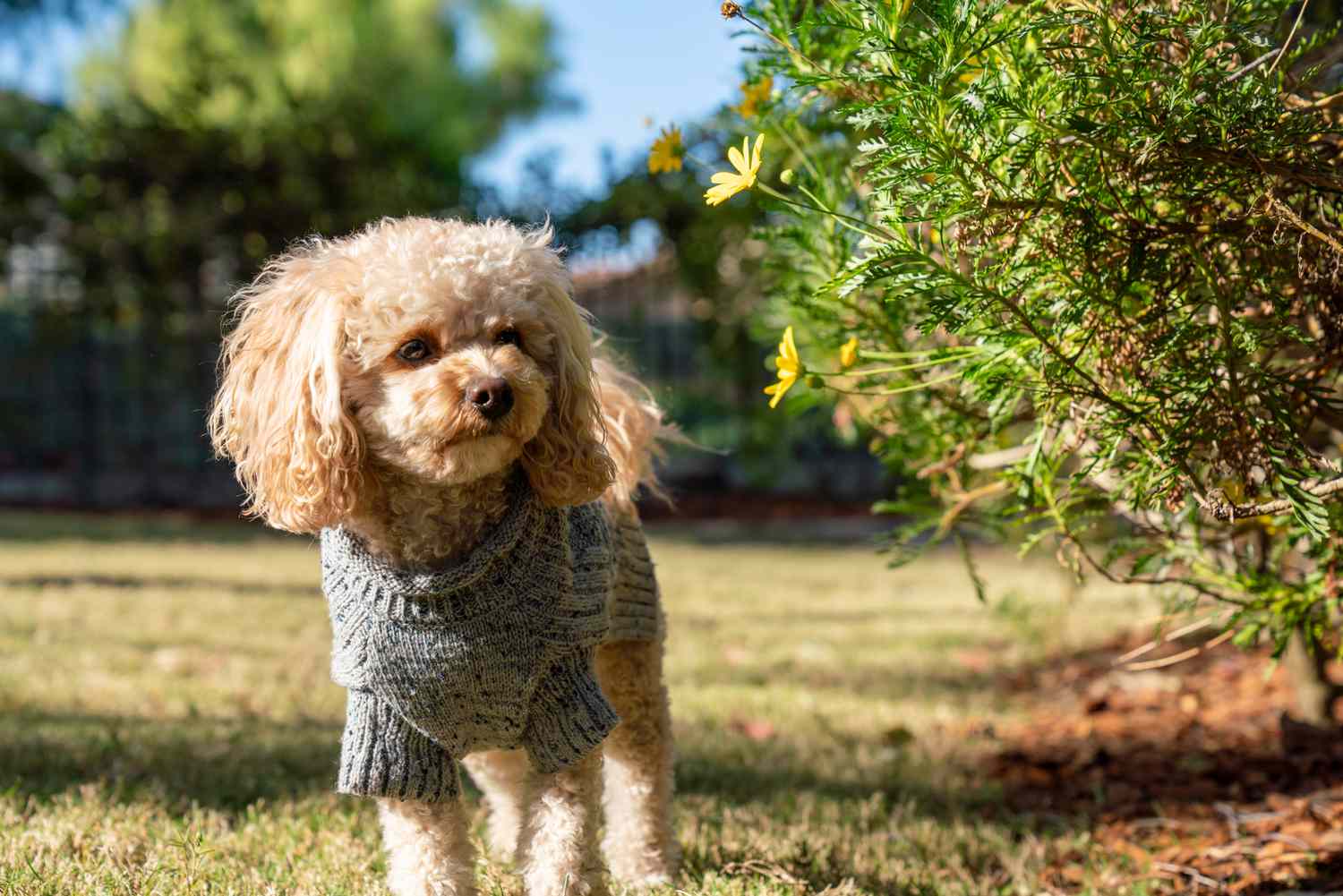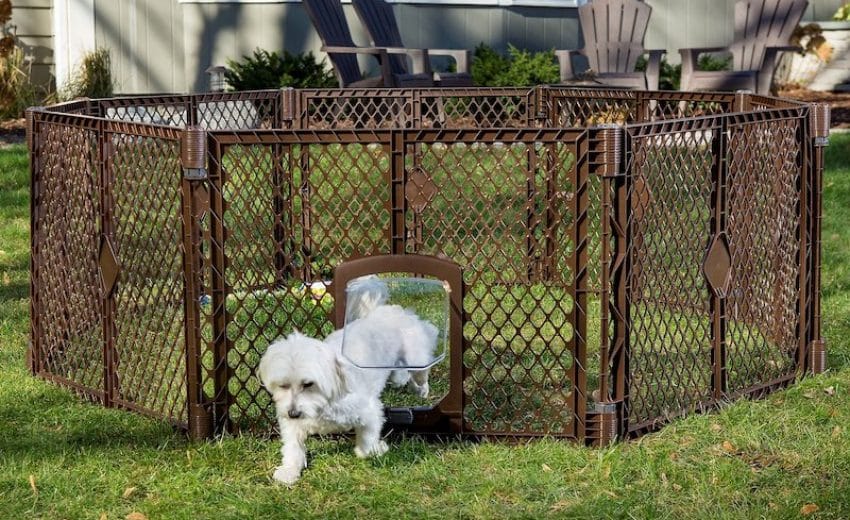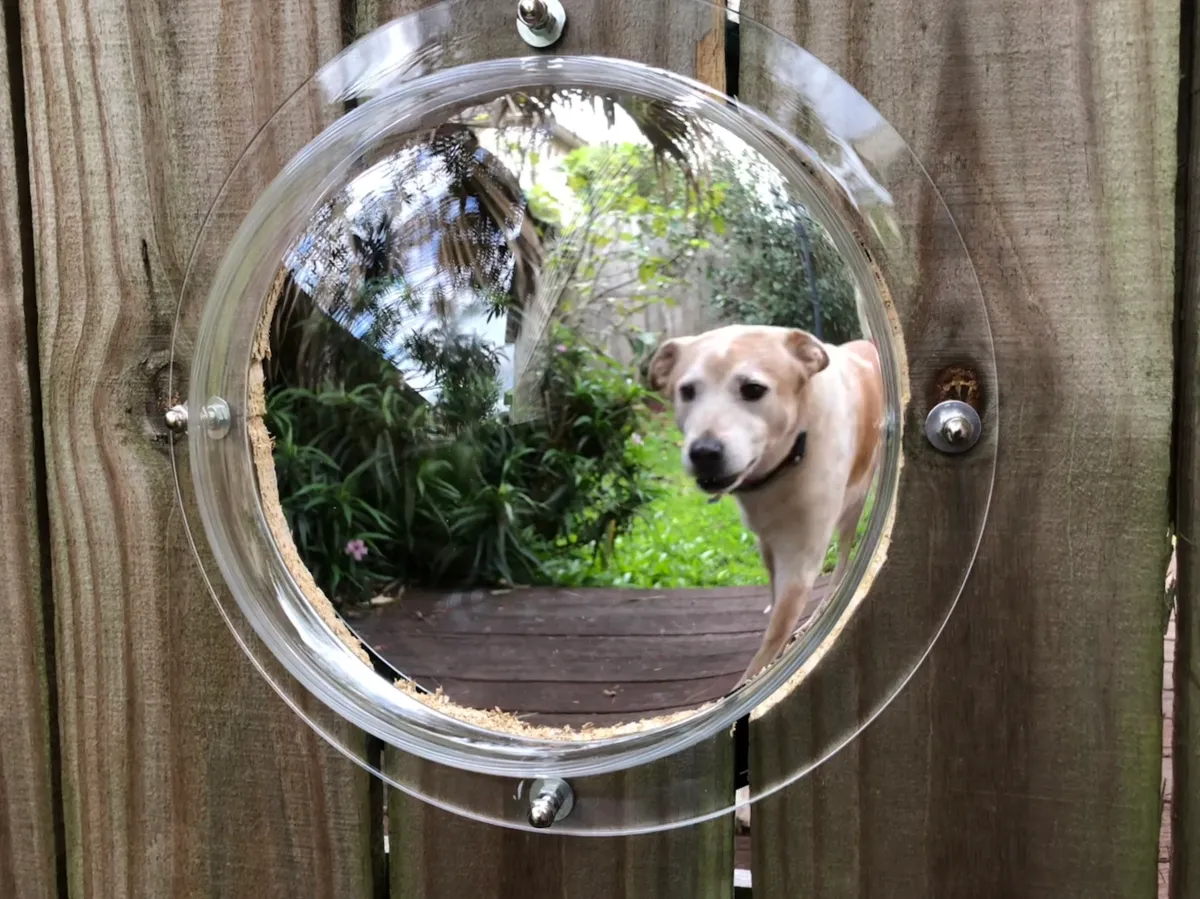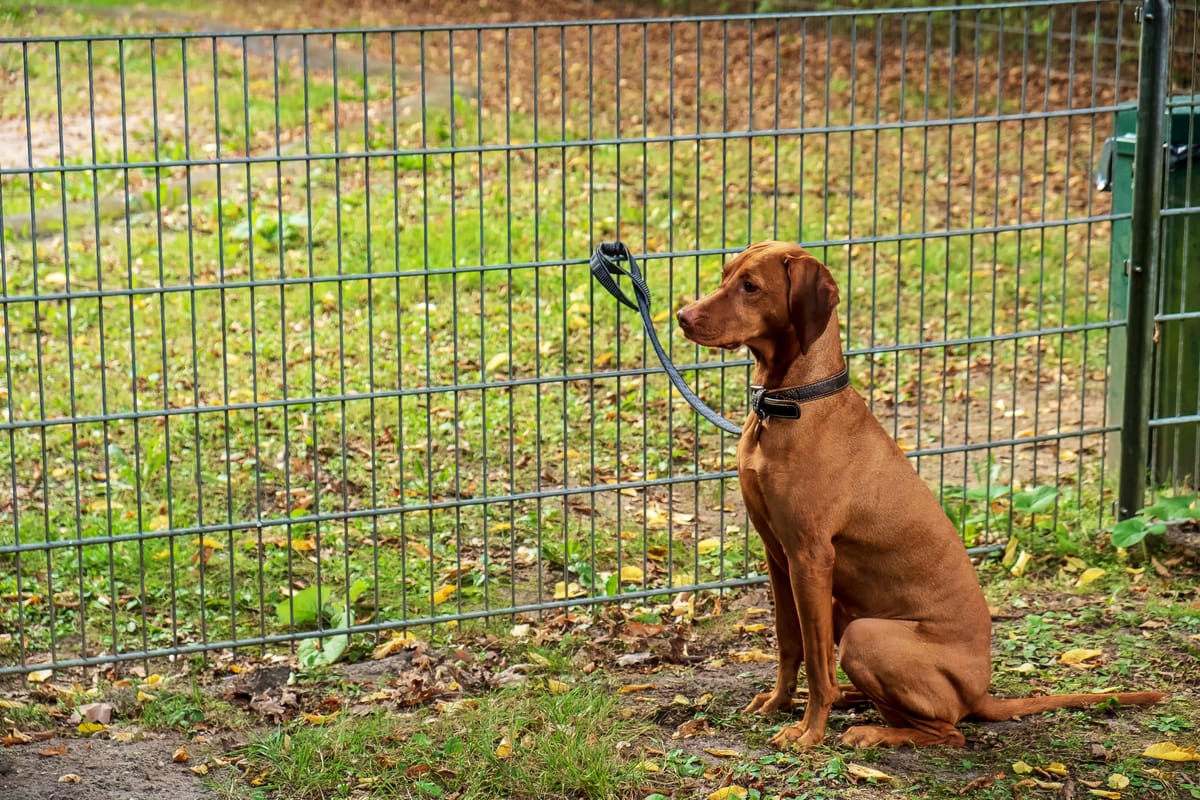In building a dog fence, the spacing of fence posts is pivotal. This spacing ensures the fence's strength, preventing escape and protecting the dog. Factors influencing post spacing include the dog's size, breed, behavior (like jumping or digging), and the chosen fencing material. Additionally, environmental considerations, such as terrain, are vital. Proper spacing is essential to balance security and durability, providing a safe, enclosed space for your dog. This guide will explore these aspects in depth, offering insights into optimal post spacing for dog fences, tailored to accommodate various needs and scenarios.
Understanding Fence Dynamics
The stability and security of a dog fence are underpinned by several basic principles that ensure it effectively serves its purpose. Firstly, the strength of a fence is largely determined by its foundation, the fence posts. These posts act as the main structural supports, holding the fencing material in place. The durability of the fence depends on the quality and installation of these posts. They must be sturdy enough to withstand external pressures like wind, the dog's weight, and environmental factors.
Post spacing plays a crucial role in the overall integrity of the fence. Too far apart, and the fence becomes vulnerable to sagging or breaking, especially if the dog attempts to climb or lean against it. Conversely, posts that are too close might be unnecessary and could increase the cost and labor of fence construction without providing additional benefits. The ideal spacing ensures that the fence is sufficiently supported along its entire length, providing a balance between material use and structural integrity.
Furthermore, the type of fencing material also influences post spacing. Heavier materials like wood or chain link require more support and thus closer post spacing, whereas lighter materials can be supported with wider spacing. The terrain also affects post spacing; uneven or sloped land might require varying post distances to maintain a uniform fence height and strength.
In summary, understanding the dynamics of fence construction, especially the role of post spacing, is essential. It ensures that the fence not only remains upright and intact but also provides a secure, escape-proof enclosure for dogs, tailored to individual needs and environmental conditions.
Factors Affecting Post Spacing
Determining the ideal post spacing for a dog fence involves considering various factors that can influence its effectiveness and durability. Here are key elements to consider:
Dog Size and Breed Characteristics
The size and physical capabilities of your dog are paramount in deciding post spacing. Larger breeds or those known for their agility, such as Border Collies or Greyhounds, may require more robust fencing with closer post spacing to prevent escape attempts. Small breeds or less active dogs might not exert as much pressure on the fence, allowing for slightly wider post spacing. Additionally, consider breed-specific behaviors, like the propensity for climbing or digging, and adjust the spacing to counteract these tendencies effectively.
Fence Height and Material Considerations
The type of material used for the fence impacts the required spacing. Heavier materials like wood or chain link demand closer spacing to support their weight and resist bending or breaking. In contrast, lighter materials like vinyl or wire mesh can be supported with wider spacing. The height of the fence is also a critical factor. Higher fences, necessary for taller or jumping-prone dogs, exert more leverage on posts and thus may need closer spacing for added stability and to prevent toppling over.
Terrain and Environmental Factors
The terrain where the fence is being installed significantly affects post spacing. Uneven ground, slopes, or areas with soft soil may require closer spacing and deeper post installation for enhanced stability. Environmental conditions like frequent strong winds or heavy snowfall also necessitate tighter post spacing to ensure the fence withstands these pressures. Additionally, consider the presence of trees, roots, or rocks that might affect post placement and require adjustments in spacing. Each of these factors plays a crucial role in ensuring the fence is not only structurally sound but also effective in keeping your dog safely enclosed.
Standard Spacing Guidelines
When constructing a dog fence, adhering to standard spacing guidelines ensures a balance between structural integrity and cost-effectiveness. Here are general recommendations and adjustments for various fence types:
General Recommendations for Post Spacing
As a rule of thumb, fence posts are typically spaced 6 to 8 feet apart. This range is considered optimal for most residential dog fences, providing adequate support for the fencing material and preventing sagging or bending. For larger dogs or those prone to jumping or climbing, reducing the spacing to 5 or 6 feet can enhance the fence's strength and deter escape attempts. It's important to note that the type of terrain and the chosen fencing material can influence these standard recommendations, requiring adjustments for specific situations.
Adjustments for Different Fence Types
- Wood Fences: Being heavier, wood fences often require closer post spacing, around 5 to 6 feet, to support their weight and maintain structural integrity.
- Chain-Link Fences: Chain-link is more flexible and can generally be supported with post spacing of 6 to 8 feet. However, for taller chain-link fences or in areas with high wind, reducing spacing can add necessary stability.
- Vinyl and Wire Mesh Fences: These lighter materials can be adequately supported with wider spacing, often up to 8 feet. However, for wire mesh, if the dog is a climber or the area is prone to wildlife encounters, closer spacing may be beneficial for added durability.
In all cases, it's essential to consider the specific needs of your pet and the environmental conditions of your area to determine the most suitable post spacing for your dog fence.
Customizing Spacing for Your Dog
Every dog is unique, and their behaviors can significantly influence the design of a fence, particularly post spacing. Here's how to tailor post spacing for specific dog behaviors, accompanied by illustrative examples:
Jumpers
Dogs that are prone to jumping, such as Boxers or Huskies, require a fence that discourages this behavior. For these breeds, consider a taller fence with closer post spacing (around 5 feet apart). This closer spacing provides additional support for a higher fence, making it more difficult for the dog to gain the leverage needed to jump over. A case in point is a Husky owner who reduced post spacing to 5 feet and increased fence height, successfully preventing escape attempts.
Climbers
Climbing breeds like Beagles or Terriers often try to scale fences. To deter climbers, opt for a smooth material that's difficult to grip and space posts closer (about 5-6 feet apart) to reinforce the fence. Adding an inward-angled overhang at the top can also discourage climbing. An example is a Terrier owner who installed a smooth vinyl fence with closer posts and an overhang, effectively deterring the dog from climbing.
Diggers
For dogs inclined to dig, such as Dachshunds or Jack Russells, focus on the base of the fence. Install an underground barrier like chicken wire or a concrete footer. Here, standard post spacing (6-8 feet) can work, but ensuring that the barrier extends several feet underground is crucial. For instance, a Dachshund owner successfully thwarted digging attempts by installing a wire mesh underground barrier, extending two feet below the fence line.
In each case, understanding your dog's specific behavior and adapting the fence design and post spacing accordingly can create a secure, escape-proof environment tailored to their natural instincts and tendencies.
Installation Tips for Optimal Spacing
Proper installation is key to ensuring your dog fence is both secure and durable. Here’s a step-by-step guide on measuring and marking post locations, with tips for maintaining even spacing in various terrains:
Measuring and Marking Post Locations
- Begin by outlining the perimeter of your fence with stakes and string. This visual guideline will help in keeping your post alignment straight.
- Using a tape measure, mark the desired spacing on the string line, typically between 6 to 8 feet, depending on your dog’s size and the fence material.
- At each marked point, place a stake in the ground. This will be where your posts will go.
- For accuracy, double-check the distance between each stake.
- Use a line level on your string to ensure that the tops of your posts will be level, adjusting the stakes as necessary for any elevation changes in your terrain.
Maintaining Even Spacing in Varying Terrains
- In uneven or sloping terrains, maintain a consistent fence height by adjusting the depth at which posts are planted, rather than changing the spacing. This might mean some posts will be buried deeper than others.
- For sloped terrains, consider 'stepping' the fence panels or using a racked design to conform to the land's gradient while keeping post spacing consistent.
- In areas with soft soil, reinforce post bases with concrete or gravel for added stability, ensuring posts remain upright and evenly spaced.
- If you encounter obstacles like rocks or tree roots, slightly adjust the post locations while striving to keep as close to the original spacing as possible.
- Always consider local wind patterns and soil conditions. In windy areas, closer spacing might be necessary for additional support.
By following these steps, you can achieve optimal post spacing, ensuring your dog fence is both aesthetically pleasing and functionally secure, regardless of the terrain challenges.
Common Mistakes to Avoid
When installing a dog fence, certain common mistakes can compromise its effectiveness and durability. Being aware of these can help in creating a more secure and lasting barrier for your pet.
Overspacing and Underspacing Consequences
Overspacing posts can lead to a weak fence structure. It increases the likelihood of sagging or breaking under pressure, whether from environmental factors or your dog's attempts to escape. Conversely, underspacing, while offering more support, can be unnecessarily costly and labor-intensive without providing proportional benefits. It's crucial to find a balance based on your dog's size, fence material, and terrain.
Ignoring Landscape Features and Obstacles
Failing to consider the natural features of your landscape, such as slopes, uneven ground, or existing obstacles like trees and large rocks, can result in a poorly installed fence. Adjusting post spacing and installation techniques to accommodate these features is essential for a stable fence. For instance, not accounting for a slope can lead to uneven fence height, making it easier for your dog to escape in certain areas. Similarly, ignoring underground utilities or irrigation systems during installation can lead to costly damages and require reinstallation of parts of the fence.
Maintenance and Adjustments
Regular maintenance is crucial to ensure the longevity and effectiveness of your dog fence. Periodically inspect the fence and posts for signs of wear, damage, or loosening. Look for rust on metal posts, rot in wooden ones, or any bending or breaking in the fence material. It's also important to check the ground around the posts for erosion or soil shifting, which could affect stability. If you notice changes in your dog's behavior or abilities, or alterations in the landscape, adjustments to the fence, such as modifying post spacing or height, might be necessary. Timely maintenance and adjustments will keep the fence secure and your pet safe.
Additional Safety Considerations
Enhancing your dog fence with additional safety elements like gates and barriers is crucial for accessibility and security. Gates should be sturdy and equipped with reliable latches to prevent accidental openings. Consider adding underground barriers or overhangs to deter diggers and climbers. Using quality materials and proper installation techniques cannot be overstated; they ensure the fence's durability and resilience against physical stress and environmental factors, providing a lasting safe haven for your pet.
Conclusion
In summary, building an effective dog fence requires careful consideration of post spacing, tailored to your dog's size, breed, and behavior. Remember, standard post spacing is typically 6 to 8 feet, but adjustments may be necessary for different fence types and individual dog needs. Avoid common pitfalls like overspacing or ignoring landscape features, and routinely inspect and maintain your fence for enduring stability.
Incorporating additional safety elements and using quality materials will further enhance the security of your fence. By adhering to these guidelines, dog owners can construct a responsible, well-informed fencing solution, ensuring a safe and secure environment for their pets.
FAQs
- What is the recommended post spacing for a dog fence?
- The ideal post spacing for a dog fence typically ranges between 6 to 8 feet, but it can vary based on factors like dog size, breed, and fence material.
- Should I adjust post spacing based on my dog's behavior?
- Yes, dogs with specific behaviors like jumping, climbing, or digging may require closer post spacing to reinforce the fence's security.
- What should I do if my dog is a digger?
- To deter digging, consider adding an underground barrier, like chicken wire or a concrete footer, extending below the fence line.
- Is it necessary to have gates in the dog fence?
- While not mandatory, gates provide convenient access and should be included in the fence design for maintenance and safety purposes.
- How do I maintain my dog fence over time?
- Regularly inspect the fence for wear, damage, or shifting posts. Adjust post spacing or height as needed to accommodate changes in your dog's behavior or landscape.
- What are the consequences of overspacing or underspacing fence posts?
- Overspacing can lead to a weak fence that sags or breaks, while underspacing can be costly without proportional benefits. Finding the right balance is essential.
- What safety elements should I consider for my dog fence?
- Incorporate sturdy gates with reliable latches, and consider additional features like overhangs or underground barriers to enhance security and deter escape attempts.
Want to know more about dog fencing?





